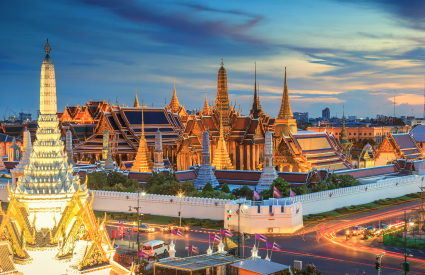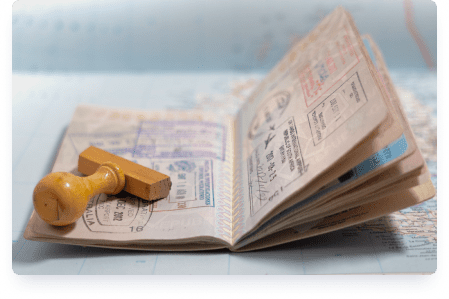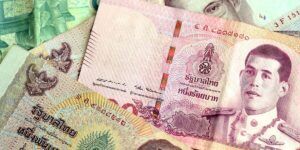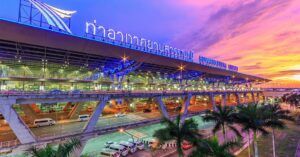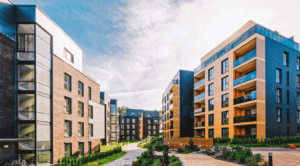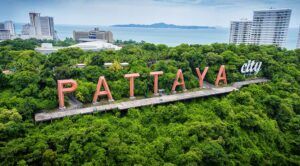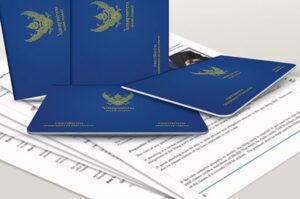Reuniting with your spouse in the United States is a journey filled with hope and numerous queries, particularly about the CR1 visa processing time. This path, often new and unfamiliar, can bring about both excitement and uncertainty for many. Understanding the steps and time involved in securing a CR-1 visa is vital for couples planning their future together. This article serves as a guide, offering clear insights into the CR1 visa process. By focusing on the processing timeline, we aim to provide clarity and support to those embarking on this significant journey. Our goal is to simplify the complexities of the visa process, making it more approachable and less daunting for applicants.
What is a CR1 Visa?
The CR-1 visa plays a pivotal role in uniting families across international borders. It is specifically designed for the foreign spouses of US citizens, allowing them to live together in the United States. The ‘CR’ in CR-1 stands for ‘Conditional Resident’, which is a key aspect of this visa type. Upon approval, the visa grants the holder conditional permanent resident status in the United States for a period of two years. During these two years, the couple lives together in the US and starts building their shared life. As the two-year mark approaches, the couple must jointly file to remove the conditional status of the residency. This step is necessary as it requires the couple to demonstrate that their marriage is not only valid but also ongoing. The process involves submitting evidence of their shared life, such as joint financial documents, photos, and other proofs of a genuine marital relationship. Successfully completing this step grants permanent residency status, solidifying the spouse’s place in their new home in the United States.
The Processing Timeline: What to Expect
Here’s what to expect:
- Petition Filing: The journey to a CR1 visa starts when the US citizen spouse files Form I-130, Petition for Alien Relative, with the United States Citizenship and Immigration Services (USCIS). This initial step is crucial as it legitimizes their marital relationship. The processing time for this petition can vary, typically spanning several months. During this period, it’s important for applicants to ensure all information provided is accurate and complete to avoid any potential delays.
- National Visa Center (NVC) Stage: Following the approval of the I-130 petition, the process progresses to the National Visa Center (NVC). At this stage, the foreign spouse is required to complete Form DS-260, the Immigrant Visa Electronic Application. Additionally, this phase involves the submission of necessary civil and financial documents. The time taken by the NVC to process these submissions can range from a few weeks to several months, depending on various factors like the volume of applications being handled and the completeness of the submitted documents.
- Interview and Approval: The next significant step occurs after the NVC approves the application. The case is then sent to the US Embassy in Bangkok, where an interview is scheduled with the Thai spouse. The timing of the interview is subject to the embassy’s schedule and current workload. This interview is a critical component of the process, where the applicant’s eligibility for the visa is assessed based on the interview and the documents provided.
- Visa Issuance: Once the interview is successfully completed, the CR-1 visa is typically issued within a week. However, this timeframe can vary depending on individual circumstances, including any additional administrative processing that might be required. It’s important for applicants to be prepared for some flexibility in this stage, as various factors can influence the exact timing of visa issuance.
Factors Influencing Processing Time
Several factors can affect the CR-1 visa processing time:
- Accuracy of Application: One of the most significant factors is the accuracy and completeness of the application. It’s essential that all forms are filled out correctly and that every necessary document is included. Mistakes or missing information can lead to delays, as the application may need to be returned for corrections. Applicants should double-check their forms and consult with experts if needed to ensure everything is in order.
- Workload of USCIS and Embassy: The processing times can also vary based on the current workload at the United States Citizenship and Immigration Services (USCIS) and the US Embassy in Bangkok. These institutions handle a large volume of applications, and processing times can fluctuate depending on their capacity and the number of applications received. It’s important for applicants to be aware that during peak periods, processing can take longer than usual.
- Additional Scrutiny: Some applications may require additional scrutiny. This can happen if the USCIS or the embassy needs more information to make a decision on the application. In some cases, applicants might be asked to provide additional evidence to support their application or to clarify certain aspects of their case. This extra step is necessary to ensure that all visa grants meet the required standards, but it can extend the overall processing time.
Tips for a Smooth Process
To ensure a smooth CR-1 visa application process, consider the following tips:
- Gather Documents Early: Begin collecting necessary documents as soon as you decide to apply. This includes legal documents like marriage certificates, financial statements, and any other paperwork required by USCIS or the embassy. Having these documents ready in advance can significantly reduce stress and prevent delays. Organize them in a way that makes them easy to access and review. This proactive approach can save valuable time, especially if unexpected requests for additional documentation arise.
- Stay Informed: Keeping track of your application status is essential. Utilize online tools provided by USCIS to monitor the progress of your application. Additionally, maintain regular communication with the National Visa Center (NVC) and the US Embassy in Bangkok. Being proactive in seeking updates can help you stay on top of any changes or additional requirements. Remember, immigration policies and procedures can change, so staying informed about any new developments is important.
- Prepare for the Interview: The interview is a vital part of the visa process. It’s your opportunity to demonstrate the authenticity of your marriage and your readiness to join your spouse in the US. Prepare by reviewing the documents you’ve submitted, and be ready to answer questions about your relationship and future plans honestly and clearly. Also, ensure you bring all required documents to the interview. A well-prepared applicant can make a positive impression, which is crucial for a successful outcome.
Conclusion
While the CR-1 visa processing time can vary, understanding the steps involved and preparing accordingly can make the journey smoother. Patience and meticulous attention to detail are key throughout this process. Each step, from the initial petition filing to the final interview, is crucial in bringing you closer to reuniting with your spouse in the United States.
This visa is more than a document; it’s a gateway to a new life and shared experiences with your partner. As you navigate this path, remember that the end goal – a life together in the United States – is a testament to your commitment and dedication. The journey might be challenging, but the reward of being together makes it worthwhile.
Contact Siam Legal
 | Ken Graham US Immigration Attorney Partner, Siam Legal International |
 | Natdaphon Luengsawang Senior US Visa Consultant Siam Legal International |
LIVE SUPPORT
 CALLCall (702) 799 9719 |  CHATChat with our representative | |
| From US: Sunday – Friday 5:00 PM – 7:00 AM (New York time) 2:00 PM – 4:00 AM (Los Angeles time) From Thailand: Monday – Friday | ||
